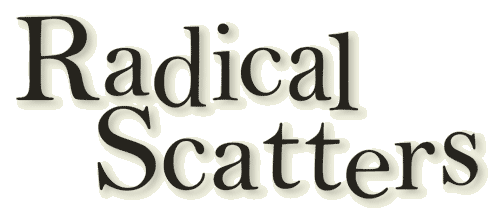Introductions
- Textual and Critical Introductions
- Site Introduction
Browse
Indices
The core of Radical Scatters consists of eighty-two documents carrying over one hundred fragmentary texts composed by Dickinson in the final decades of her life. In addition to the core texts, the archive’s primary materials include fifty-three poems, letters, and other writings by Dickinson with direct links to the fragments. While the manuscripts of the fragments are housed at the Amherst College Library, the manuscripts of the related texts are divided among seven libraries—Amherst College Library (29), Houghton Library (12), Boston Public Library (6), New York Public Library (1), Yale University Library (1), Princeton University Library (1), The Rosenbach Museum and Library (1), the Jones Library, Inc. (1)—and one private collection (Oresman, 1).
The criteria for inclusion used in this version of Radical Scatters are as follows: all of the fragments featured as “core” texts have been assigned composition dates of 1870 or after; all of the core fragments are materially discrete; and all of the core fragments are inherently autonomous, whether or not they also appear as traces in other texts. Of the approximately one hundred extant fragments I took as my point of departure, almost half descend to us as independent passages, as brief texts that either have no direct links to other poems or letters in Dickinson’s oeuvre or whose links to these texts is now irretrievable. Like Emerson’s souls, neither touching nor mingling, never composing a set, these positionless fragments depict the beauties of transition and isolation at once. Belonging to a chronology of the instant, vulnerability is the mark of their existence: they belong, if at all, to a discontinuous series, or to a “book from which each page could be taken out” (Cixous 105).
The remaining fragments are “trace fragments,” or fragments—sometimes avant-textes, sometimes inter-texts, sometimes post-texts—associated with a larger constellation of poems, letters, or drafts among Dickinson’s papers. Again and again, as if poems, letters, and fragments communicated telepathically, a line or phrase from a fragment re-appears, often altered, in the body of a poem, a message, or even another fragment. Yet the painstaking effort to identify all such trace fragments and link them with the texts in which they appear fails to effect any lasting closure: neither residents nor aliens, neither lost nor found, these trace fragments are caught between their attraction to specific, bounded texts and their resistance to incorporation. Instead, they require that we attend to the mystery of the encounters between fragments, poems, and letters, listening especially to the ways in which, like leitmotifs, the fragments both influence the modalities of the compositions in which they momentarily take asylum and carry those leitmotifs beyond the finished compositions into another space and time.
The inclusion of fragments belonging to a constellation of texts—i.e., trial beginnings, re-workings or repairs of textual situations, etc. of a given poem or letter—is especially vexed. In instances where there are several possible “fragments” in a given constellation, I have in general selected the briefest and most difficult to classify text as the “core” document, while also attempting to specify its relationships to other associated texts. Thus although it has been my intention to include all of the late fragments possessing aesthetic or formal integrity, the term “fragment” is itself a problematic one, and the list of contents must be understood as provisional rather than definitive. The fragments in Radical Scatters offer only an entry point into the mass of late, unbound, extra-territorial writings in Dickinson’s oeuvre. In the future, some of the documents included in the present archive will fall outside of it, while others, not yet identified as fragments, will enter it, producing not new “collections” but, rather, unforeseen and anomalous orders.
